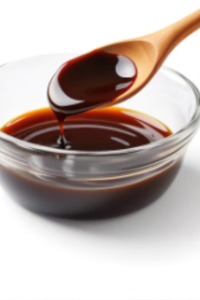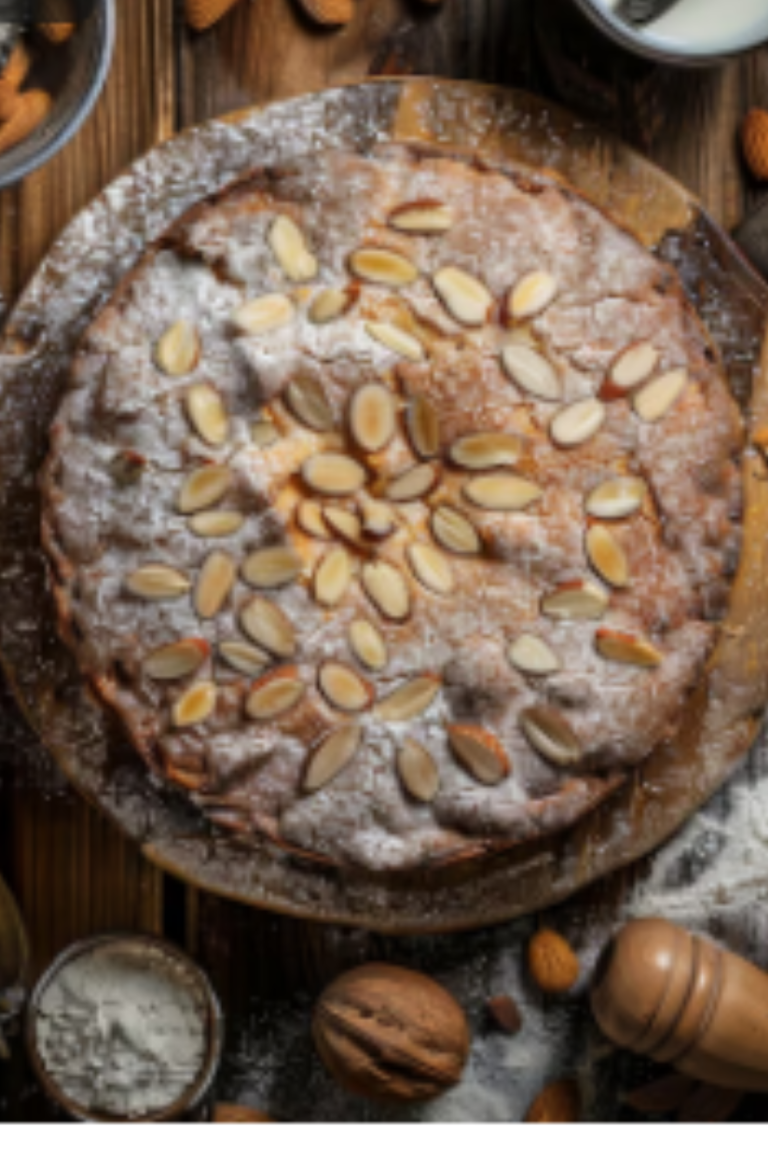MOS: Molasses Syrup role in cakes Explained
In this topic, I’m going to talk about Molasses Syrup in my own personal experience, it’s a key ingredient that adds depth and richness to various baked goods, especially cakes.
Table of Contents
ToggleWhat is Molasses Syrup?
Molasses Syrup, often referred to simply as molasses, is a dark, viscous byproduct obtained during the process of refining sugarcane into sugar. It’s known for its robust flavor profile, which ranges from bittersweet to slightly tangy, depending on the type of molasses and its processing. This syrup is rich in essential minerals like iron, calcium, magnesium, and potassium, making it not just a sweetener but also a nutritious addition to baked goods. Check out the right Molasses Syrup, cake tools, and ingredients that you need here.

Its Role in Cakes
Enhancing Flavor
One of the primary roles of molasses syrup in cakes is its ability to enhance flavor. Unlike refined sugars that offer sweetness without much complexity, molasses adds a distinctive taste earthy, slightly caramel-like, and sometimes with hints of spice. This flavor profile makes cakes richer and more satisfying, appealing particularly to those who enjoy deeper, more complex tastes in their desserts.
Moisture Retention
Another crucial role of molasses syrup is its contribution to moisture retention in cakes. Due to its thick consistency and hygroscopic nature (ability to attract and retain moisture), it helps keep cakes moist and fresh for longer periods. This is particularly beneficial in cakes that tend to dry out quickly or when baking in dry climates. Check out the right Molasses Syrup, cake tools, and ingredients that you need here.
Browning and Texture
Molasses syrup also plays a role in the appearance and texture of cakes. When added to batters, it promotes better browning during baking, giving cakes a desirable golden hue. Additionally, it can contribute to a softer crumb texture, making cakes more tender and enjoyable to eat.
molasses syrup is not just a sweetener but a versatile ingredient that significantly enhances the flavor, moisture, and texture of cakes. Its unique characteristics make it a favorite among bakers looking to elevate their baked goods with depth and complexity. Whether you’re baking a classic gingerbread cake or experimenting with new recipes, incorporating molasses syrup can truly elevate your baking game. Check out the right Molasses Syrup, cake tools, and ingredients that you need here.
Drilling Deeper: Comparing Types of Molasses Syrup
When it comes to baking, understanding the different types of molasses syrup and their specific qualities can help you choose the right one for your cakes.
Light Molasses
Light molasses, also known as mild molasses, is the sweetest and mildest form. It’s derived from the first boiling of the sugarcane juice and is lighter in color and flavor compared to other types. In cakes, light molasses adds subtle sweetness without overpowering other flavors, making it ideal for recipes where a delicate molasses flavor is desired.
Dark Molasses
Dark molasses, also called robust molasses, is obtained from the second boiling of the sugarcane juice. It has a stronger, more intense flavor and a darker color. Dark molasses lends a richer, slightly bitter-sweet taste to cakes, along with deeper caramel and toffee notes. It’s often used in gingerbread cakes and other baked goods where a more pronounced molasses flavor is desired. Check out the right Molasses Syrup, cake tools, and ingredients that you need here.
Blackstrap Molasses
Blackstrap molasses is the darkest and thickest type, extracted from the third boiling of the sugarcane juice. It has the least sugar content and the strongest flavor profile, characterized by a robust, somewhat bitter taste with a hint of mineral undertones. While less commonly used in cakes due to its intense flavor, blackstrap molasses can still be incorporated in small amounts to impart a unique depth to certain recipes.
tips for Choosing the Right Molasses for Your Cakes
When selecting molasses syrup for baking, consider the flavor intensity and color you want to achieve in your cakes:
- For a Mild Flavor: Opt for light molasses, which adds sweetness and a subtle molasses undertone.
- For a Rich Flavor: Choose dark molasses to impart a deeper, more caramel-like flavor to your cakes.
- For Intense Depth: Use blackstrap molasses sparingly to add a bold, complex taste to robust cake recipes. Check out the right Molasses Syrup, cake tools, and ingredients that you need here.
Comparison Table: Types of Molasses Syrup in Baking
Here’s a comparison table summarizing the key differences and considerations when using different types of molasses syrup in baking cakes:
| Characteristic | Light Molasses | Dark Molasses | Blackstrap Molasses |
|---|---|---|---|
| Color | Light brown | Dark brown | Very dark brown |
| Flavor Profile | Mild, sweet | Rich, slightly bitter-sweet | Strong, bitter, mineral undertones |
| Sweetness Level | High | Medium | Low |
| Mineral Content | Moderate | Moderate | High |
| Moisture Retention | Good | Good | Excellent |
| Browning Ability | Moderate | High | High |
| Recommended Use | Delicate cakes, cookies | Gingerbread, spice cakes | Specialty recipes, small amounts |
| Nutritional Benefits | Iron, calcium | Iron, calcium | Iron, calcium, magnesium, potassium |
Key Notes and Considerations
- Flavor Intensity: Choose light molasses for subtle sweetness, dark molasses for richer flavor, and blackstrap molasses for intense depth.
- Color Impact: Light molasses yields lighter cakes, while dark and blackstrap molasses contribute to darker hues.
- Moisture Retention: All types of molasses syrup enhance moisture retention, keeping cakes fresher for longer.
- Nutritional Value: Blackstrap molasses offers higher levels of minerals compared to light and dark molasses.
- Experimentation: Adjust quantities based on flavor preference and recipe requirements, as each type of molasses syrup affects the overall taste and texture of cakes differently. Check out the right Molasses Syrup, cake tools, and ingredients that you need here.
FAQs on Using Molasses Syrup in Baking Cakes
Here are some frequently asked questions (FAQs) to help you better understand how to use molasses syrup in baking cakes:
1. Can I substitute molasses syrup with other sweeteners in cake recipes?
Yes, you can substitute molasses syrup with other sweeteners like honey, maple syrup, or dark corn syrup. However, keep in mind that each substitution will alter the flavor and texture of your cake.
2. How do I adjust the amount of molasses syrup in a recipe?
If you prefer a stronger molasses flavor, you can increase the amount slightly. Conversely, reduce the quantity if you want a milder taste. Experimentation is key to finding the right balance for your desired outcome.
3. Can I use blackstrap molasses in any cake recipe?
Blackstrap molasses has a very strong flavor and is best used sparingly in recipes that can complement its intense taste, such as in gingerbread or spice cakes. Using too much may overpower other flavors.
4. Does molasses syrup affect the texture of cakes?
Yes, molasses syrup contributes to the moistness and tenderness of cakes due to its hygroscopic properties. It helps cakes retain moisture, resulting in a softer crumb and longer shelf life.
5. Are there any health benefits to using molasses syrup in baking?
Yes, molasses syrup contains minerals such as iron, calcium, magnesium, and potassium, which can provide some nutritional benefits compared to refined sugars. However, it should still be consumed in moderation due to its calorie content. Check out the right Molasses Syrup, cake tools, and ingredients that you need here.
Final Words
Incorporating molasses syrup into your cake recipes not only enhances flavor but also adds nutritional value and improves texture. Whether you choose light, dark, or blackstrap molasses depends on your preference for sweetness and depth of flavor. Experiment with different types and quantities to discover how molasses syrup can elevate your baking creations.

Hi!
I’m Mike, the creator of Forum Foodies. In my own personal experience, understanding ingredients is key to great cooking.
Forum Foodies offers guides on various ingredients, from staples to exotic finds. Join our community, share your experiences, and learn from fellow food lovers.
Have questions or suggestions? Email me at info@forumfoodies.com. Let’s embark on this delicious adventure together.
Happy cooking.
Mike/
Related Posts
- FML: Fudge Molasses role in cakes Explained
In this topic, I'm going to talk about FML - Fudge Molasses in my own…
- CHSY: Cherry Syrup role in cakes Explained
In this topic, I'm going to talk about cherry syrup and its role in cakes.…
- BPS: Black Plum Syrup role in cakes Clarified
In this topic, I'm going to talk about Black Plum Syrup (BPS) and its role…
- PSY: Pineapple Syrup its role in cakes Clarified
In this topic, I'm going to talk about the fascinating world of culinary ingredients, focusing…
- MCB: Molasses Cake Batter role in cakes Clarified
In this topic, I'm going to talk about a fascinating ingredient that adds a unique…
- DMJ: Date Molasses Jam role in cakes Clarified
In this topic, I'm going to talk about Date Molasses Jam (DMJ) and its role…
- ALS: Almond Lemon Syrup role in cakes Clarified
In this topic, I'm going to talk about Almond Lemon Syrup (ALS) and its role…
- DCM: Dark Caramel Molasses role in cakes Clarified
In this topic, I'm going to talk about DCM - Dark Caramel Molasses in my…
- HLS: Honey Lemon Syrup role in cakes Explained
In this topic, I'm going to talk about the role of HLS (Honey Lemon Syrup)…
- BCSY: Brown Cane Syrup role in cakes Clarified
In this topic, I'm going to talk about a key ingredient in baking: Brown Cane…
- MCS: Maple Cream Syrup role in cakes Explained
In this topic, I'm going to talk about the delightful world of Maple Cream Syrup…
- MCS: Maple Cinnamon Syrup role in cakes Clarified
In this topic, I'm going to talk about Maple Cinnamon Syrup (MCS) and its role…
- CST: Role in cakes Explained
In this topic, I'm going to talk about the CST - Cranberry Shortcake, drawing from…
- PCJ: Passionfruit Juice role in cakes Explained
In this topic, I'm going to talk about the delightful addition of passionfruit juice in…
- EC: Elderberry Concentrate role in cakes Explained
In this topic, I'm going to talk about the role of Elderberry Concentrate in cakes,…




